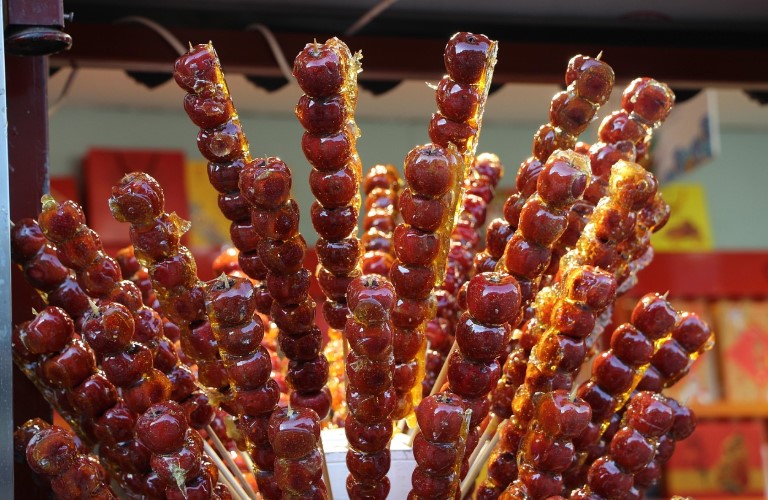07
Aug 2024
Hospital issues caution about burns from trending candied-fruit recipe on social media.
Published in News on August 07, 2024

A popular TikTok food trend is heating up so much that doctors are raising alarms about its risks.
On both TikTok and YouTube, viral videos showcase people preparing tanghulu—a Chinese delicacy featuring fruit skewers enveloped in a sugary, crystallized coating. However, creating this candy-like shell has led to several hospital visits, according to medical professionals.
Colleen Ryan, a surgeon at Shriners Children’s Boston, reported on Wednesday that she had treated two patients in just two weeks for burns related to the tanghulu trend. She noted that "word of mouth" among medical professionals both in the U.S. and globally suggests an increase in severe scalding injuries linked to this trend. In a recent statement, the hospital cautioned parents to supervise their children closely, especially when making the dipping syrup for tanghulu, which involves melting sugar in a microwave or pan.
Ryan emphasized that melted sugar retains heat more effectively than other liquids. “If spilled, it can cause severe scald burns, similar to hot soup, but often deeper due to sugar's properties,” she explained. “Children or teens may quickly grab the pot or bowl, leading to hot syrup splashing, spilling, or splattering onto them.”
She also noted that burns are most likely to affect the face or hands.
The warning comes as a related TikTok trend is reportedly causing similar injuries. According to news reports this week, a Pennsylvania boy was hospitalized for severe burns after trying out a dish in which Jolly Rancher candies are melted in the microwave to make the coating for fruit, which is often called “candy grapes. "
Ariel Aballay, director of the burn unit at West Penn Hospital, where the 9-year-old was treated, reported seeing four patients—two adults and two children—in the past three weeks who had injured themselves making TikTok recipes. Those in need of hospital stays for severe burns may face significant accommodation needs, especially if they require extended treatment or specialized care.
Aballay shared with a local CBS station that molten candy can reach 350 degrees Fahrenheit. “For comparison, boiling water is 212 degrees, so once you hit that high temperature, it doesn’t take long to cause a serious burn,” he explained.
The boy’s mother expressed regret over what was intended to be “a fun bonding experience” on a rainy day. “I’ve had a lot of mom guilt for even thinking this was a good idea,” she told CBS.
Despite the warnings, the tanghulu trend continues to spread, with some TikTok users showcasing their burns while preparing the treat. The trend has evolved, with people experimenting by applying the sugary coating to various foods like corn dogs, Spam, and cheese, and even adding strawberry milk to the ice bath to cool the coating.
Earlier this year, Australian doctors also raised concerns about injuries from molten sugar related to tanghulu and similar TikTok recipes. In April, the Queensland Children’s Hospital in South Brisbane reported treating three patients in one month for burns caused by syrup or melted plastic containers, according to the Brisbane Times. The report also mentioned that at least 15 children in Australia and New Zealand had suffered similar burns.
Medical professionals recommend that while parents should educate their children about the dangers of handling hot sugar, they should also be familiar with basic first aid. Shriners Boston, in their recent warning, advised treating burns with 20 minutes of cool water and avoiding ice or frozen packs, such as frozen peas.









